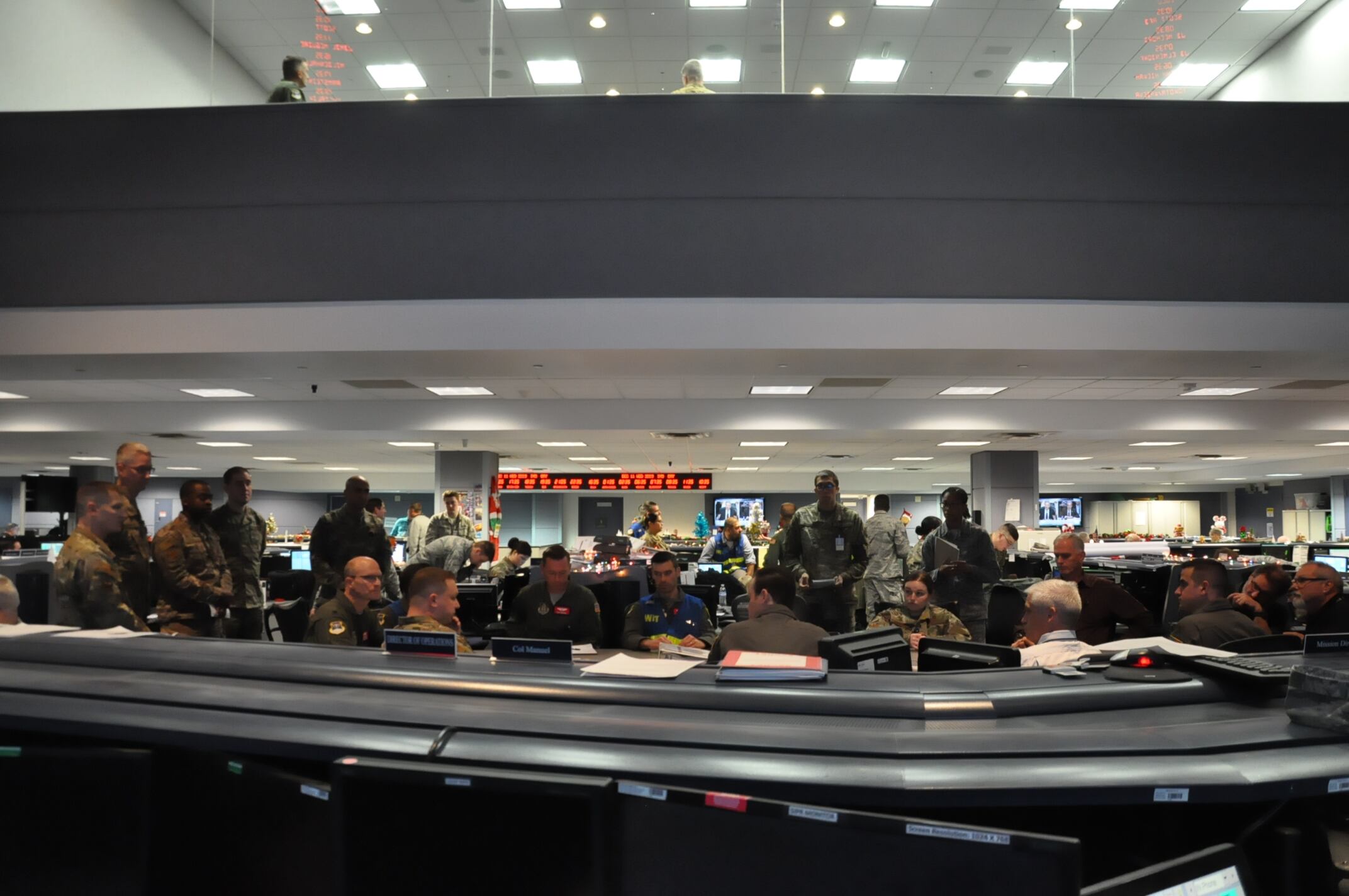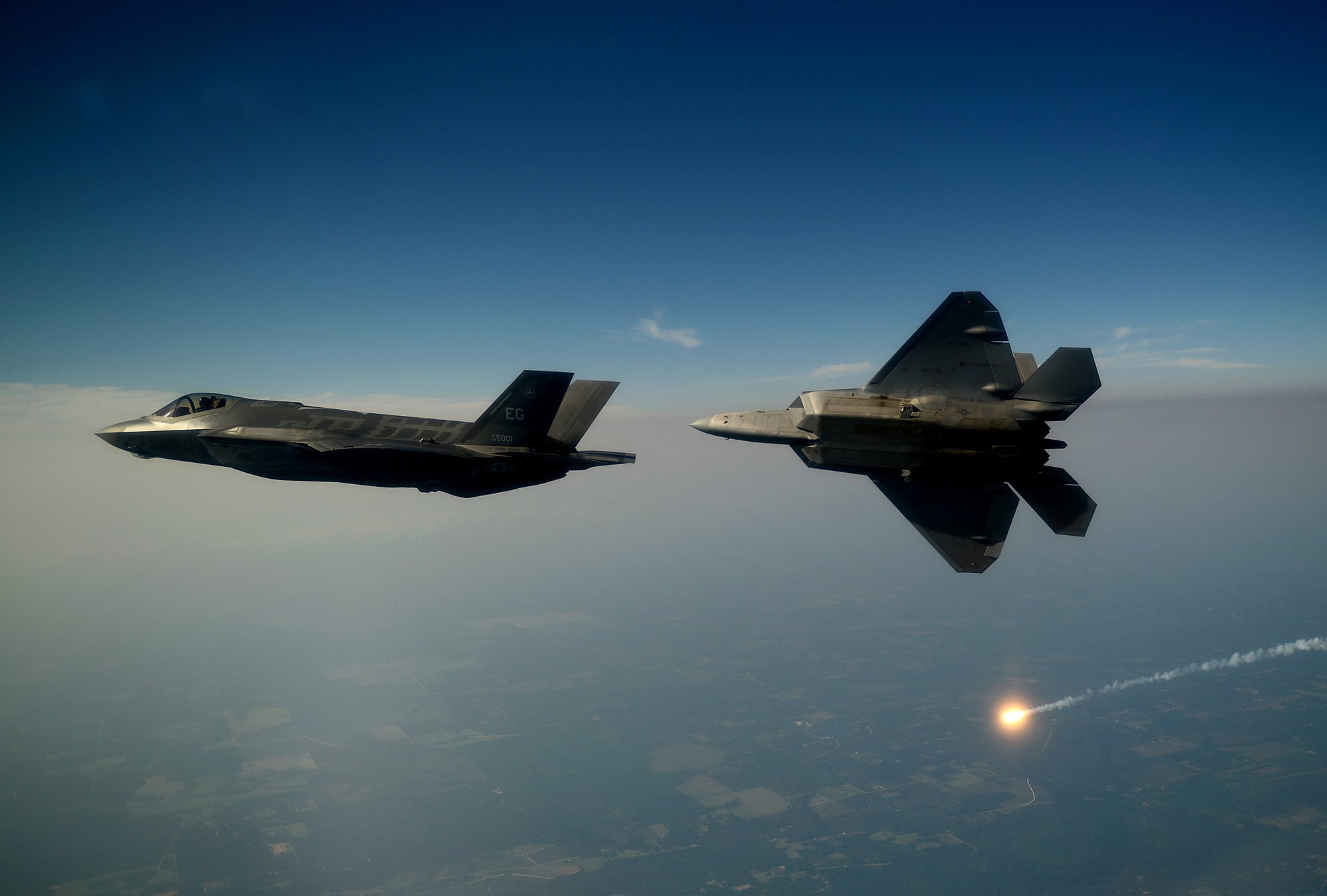SCOTT AIR FORCE BASE, Ill. — For decades, the Air Force’s tanker fleet have logged hours transferring fuel, transporting troops and serving as flying ambulances. Soon, the tankers could add another mission to the list: relaying communications data as part of the Air Force’s new mesh network.
Air Mobility Command leaders are exploring whether aerial refueling aircraft could become a communications node in the Advanced Battle Management System, Lt. Gen. Jon Thomas, the organization’s deputy commander, told Defense News in a December interview.
RELATED

The Air Force is investing in ABMS as the foundational technology to connect its air, space and cyber assets together with platforms from the other military services — a concept the Air Force interchangeably calls multidomain command and control (MDC2) or joint all domain control (JADC2). The service conducted its first test of the Advanced Battle Management System in December, which linked Air Force and Navy fighters, a naval destroyer, and an Army unit.
“We have to build a network force that supports then the ABMS architecture, that supports and is an element of overall JADC2,” Thomas said. “On a theater level, air mobility can significantly contribute to that, and I would say it starts with the tanker.”
Tankers are well-suited to be used as communications nodes for two reasons, Thomas said. One, aerial refueling planes are typically large, wide-body aircraft that have enough excess space and power to host additional communication systems. The second is their location during combat. One way to operate tanker aircraft is to position them near a contested airspace, close enough for fighters and other airborne assets to refuel as needed before returning to battle, he said.
“If you’re in that spot, you also have a great opportunity by virtue of that position. You can communicate to a lot of different assets if you have the right equipment on the tanker. You can communicate line of sight to other air assets. You can communicate line of sight possibly to some assets on the surface,” Thomas said. “If you have the ability to get to the space layer and communicate, then you can also be a pathway from line-of-sight to beyond line-of-sight, to the space layer. If you have a resilient space architecture, then you can lateral across and then come back down to a ground entry point.”
The Air Force’s newest tanker, the KC-46, has communications and defensive systems that would allow it to become a communications relay without needing significant upgrades, Thomas said.
Meanwhile, the service is modernizing a portion of its KC-135 workhorses with a suite of modifications it calls “Realtime Information to the Cockpit.” The Air Force committed $49 million for the upgrades, which Rockwell Collins will perform. The upgrades include the addition of the NATO-standard Link 16 data link as well as other communications equipment supporting the transmission of classified information.
“That will bring a data link capability and a [satellite communications] capability on the [KC-135] that it doesn’t have,” Thomas said. “We need to do more. We only have funding for 50 right now.”
Air Mobility Command would also like further communications upgrades for the KC-135 that would allow it to become a node in ABMS, and is talking with Preston Dunlap, the Air Force’s chief architect and manager of the ABMS program, about ways to involve tankers in upcoming “connect-a-thons” that will prove whether previously unconnected platforms can share data.
RELATED

“Experimentation is … the next step,” he said. “What are the additional waveforms that [we] need to have for line of sight? What are the additional ways that we can connect to the space layer?”
One endeavor already underway is the Global Lightning experiment, in which a KC-135 will be outfitted with equipment for communication with SpaceX’s Starlink — a planned “megaconstellation” of hundreds of satellites in low-Earth orbit set to provide high-bandwidth commercial internet — as well as other equipment from vendors such as Iridium and L3Harris.
“It's one thing to have to engineer it and cut a hole in the skin of the airplane, and put an antenna and do some internal racks and all that,” Thomas said. The bigger question will be whether the Air Force can put new technologies on the tanker quickly and grow them over time, he said.
“Far too often in the past, we have had great ideas and great capabilities that we put on airplanes,” he said. “[But] we’ve had no ability to go further because either the information is proprietary to a certain vendor, or we didn’t build in the size, weight, power cooling, thermal management that would allow us to add more equipment or have more capability.”
Valerie Insinna is Defense News' air warfare reporter. She previously worked the Navy/congressional beats for Defense Daily, which followed almost three years as a staff writer for National Defense Magazine. Prior to that, she worked as an editorial assistant for the Tokyo Shimbun’s Washington bureau.








